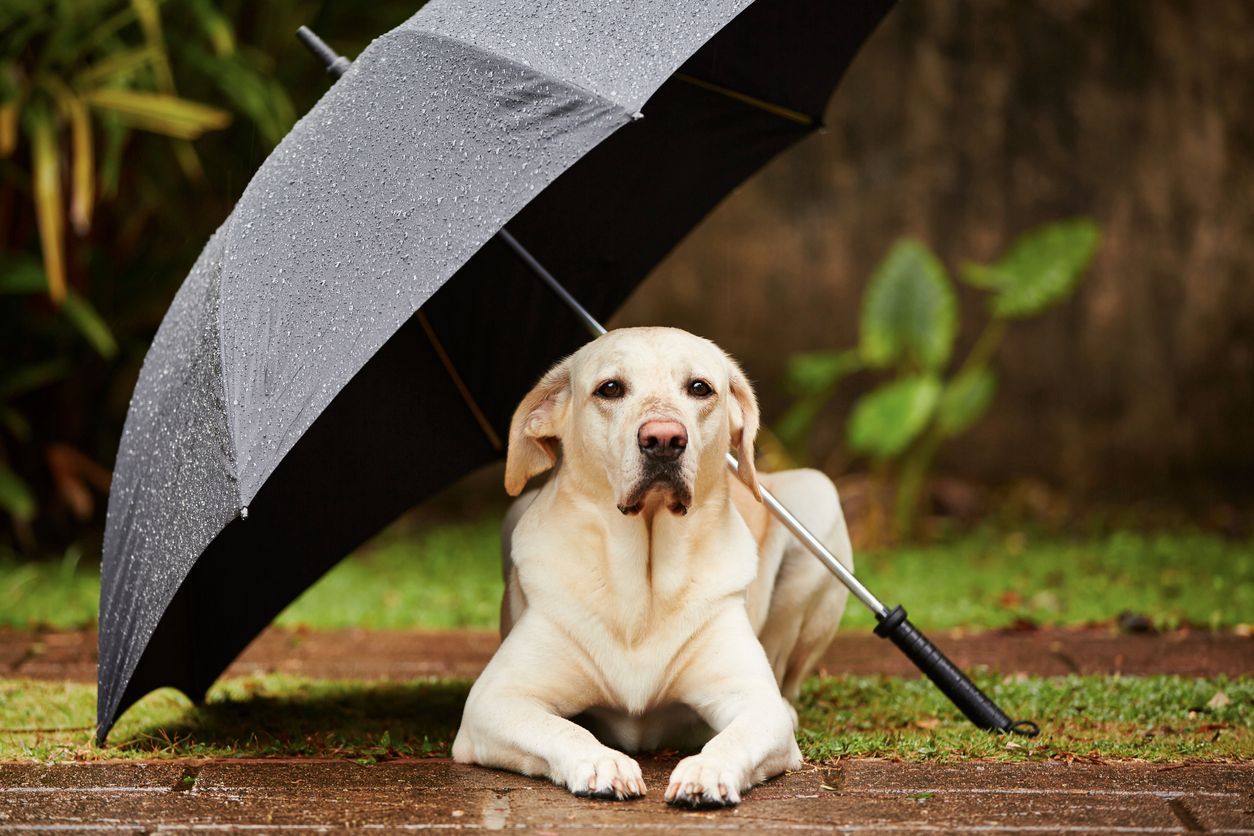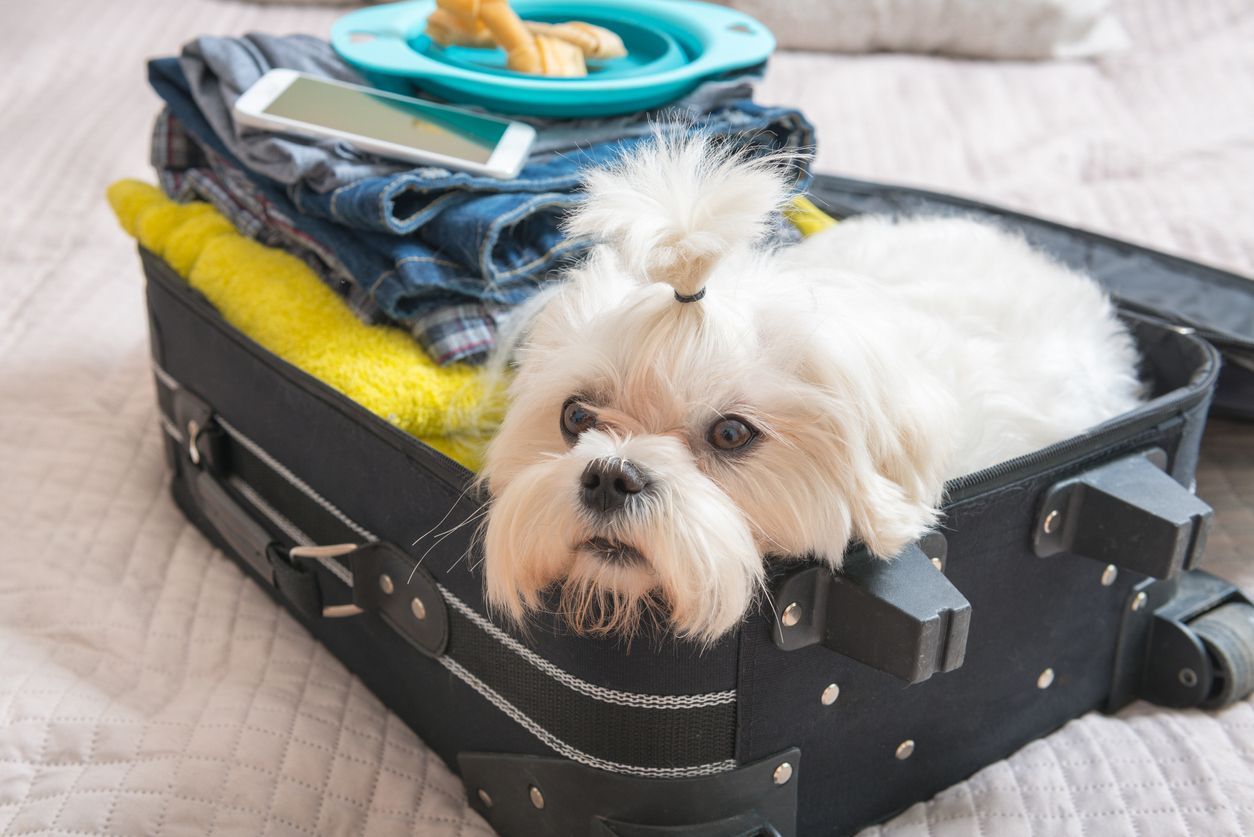Common canine summer emergencies

Every pet parent wants to do all they can to keep their pets safe all year round, but what are the biggest risks in the summer? Let’s look at some of the most common things that lead to emergency clinic visits during the summer months so you can do your best to avoid the stress and expense associated with an ER visit for your canine companion.
Being hit by a car
With higher volumes of vacation traffic, there are more cars on the road during the summer months. In addition, our dogs are more likely to be outdoors in the warmer weather. All of this adds up to more frequent opportunities for encounters between dogs at large and motor vehicles in the summer, and the results can be devastating.
Consider adopting these best practices to reduce the likelihood of your dog having a literal run-in with a car:
- Check your fence on a routine basis to make sure it’s in good shape and functional.
- Install hook-and-eye closures on screen doors.
- Teach your children the importance of securely closing gates when they pass through.
- Make a habit of securing your dog on his leash before you open the car door to step out.
As people travel more over the summer, motor vehicle accidents (MVAs) are also more common. An MVA is traumatic enough in any case. If your canine co-pilot is along for the ride, the results can be devastating for him as well. Injuries are not the only potential adverse outcome of an MVA involving a dog. It is common for dogs to panic and run away from the scene of an accident in the ensuing chaos. The fact that the dog is likely to be in unfamiliar territory further complicates the situation. Using a dog seatbelt or sturdy carrier in the car can increase the odds of getting through an accident safely.
Bites and stings
Summertime is bug season. Our dogs love to be outdoors with us enjoying all that fresh air, but it’s also the season for bites and stings. Bees, snakes, and scorpions can bite or sting curious canines. Since the consequences can range from mild and annoying to potentially life-threatening, an emergency room visit may be indicated if your dog has an encounter with one of these summertime pests and develops severe symptoms like pain, distress, collapse, or trouble breathing. A video chat with a veterinarian can be useful for determining if your dog’s symptoms are severe enough to warrant medical attention.
Bees are big, noisy, and relatively slow-moving, so they easily capture the attention of a dog or puppy. It's instinctive for a dog to treat something that behaves this way like prey, so it's not unusual for a dog to try to “hunt” a bee. When a dog is successful in his effort to catch a bee, the subsequent swelling to the tongue, lips, and muzzle can be pretty striking, but it's usually not life-threatening. If your dog appears to be in exceptional pain, visibly uncomfortable, weak, or has trouble breathing, it's best to make that trip to the emergency room just to be safe.
The likelihood of your dog encountering a venomous snake or scorpion depends on the region where you live. In the USA, rattlesnakes and scorpions are more common in the Southwest, but some are found in the Midwest and South. Cottonmouths are a bigger concern in the South as well. If you live in southern Texas or Florida, you’ll also want to keep an eye out for the highly toxic cane toad. If your dog has a severe wound or is showing symptoms of pain or collapse after an encounter with a venomous animal, it is important to seek veterinary attention right away. If your dog is unlucky enough to have a bad encounter with a venomous reptile or arachnid, try to take a photograph of the critter - if you can do so safely. This may help your veterinarian know what kind of treatment is indicated.
Minimize your dog’s chances of experiencing a painful and potentially deadly bite or sting by keeping her on a leash when you’re in risky terrain. Ask your vet if the rattlesnake vaccine (crotalus atrox toxoid) is right for you. Consider fencing off flowers or bushes that attract a lot of bees. And as for you, always remember to check your boots before putting them on in the morning. Yikes!
Dietary Indiscretion
Who doesn't love a backyard barbecue or summer potluck? It's pretty obvious that our dogs also enjoy these types of events. Savvy canine attendees know how to work the crowd and get unsuspecting guests to feed them. They will also take advantage of the fact that the humans at the party are otherwise distracted and not watching the food table closely, leaving the entire smorgasbord available to any dog who can jump up on a picnic table. There's usually no shortage of food items in the trash as well, and the grease that accumulates under the grill is also there for the taking, gravel and all. As a result, it's common to find a dog who’s made poor life choices hospitalized in a veterinary emergency center and receiving IV fluids and GI medications as a result of overindulgence.
Even though it isn’t easy, supervision and vigilance are the best ways to prevent dogs from getting into foods they shouldn’t have at a picnic, barbeque, or backyard party. If you are hosting an event with dogs present, be proactive by letting guests know about any dog-specific rules. If you are attending an event with your dog, do so with an understanding that it’s likely to be a free-for-all, regardless of any rules or requests you may ask of other guests. Dogs who are especially sensitive and prone to GI issues may be better off having a quiet and peaceful nap at home.
Fights/bite wounds
The fact that our dogs are out and about with us more in the summertime also means social encounters between dogs are more common. Whether it is due to increased traffic on walking trails, more families taking advantage of dog parks and other dog-friendly public spaces, or just visiting with friends and family during the warm summer months, there are many opportunities for our dogs to socialize and interact. Making new friends can be one of the best parts of summer. So can running and playing games like tag, chase, and bitey-face. But every so often someone gets a little too enthusiastic and an accident can happen, or - worse - you meet a dog whose social skills and manners are lacking. Either way, a trip to the emergency center is often the result.
Supervise encounters with new dogs and never force interactions. If your dog doesn’t want to meet another dog, don’t make him do it. Opting out or escaping should always be an option. Conversely, it is important to always be respectful of other people and their dogs when we are out and about. Always ask other dog parents for permission before approaching a strange dog. Do not assume every dog is friendly and wants to meet your dog. Avoid the temptation to burden your dogs with human social obligations for “being friendly” or to “just say hello.” If you know your dog doesn’t tend to get along with other dogs, accept that social situations are simply not for him and let him do his own thing away from the dog park.
Awareness of these common summertime hazards can help you keep your dog out of the emergency room this season. After all, we all want to be out there enjoying the beautiful things summer has to offer instead of recovering physically, emotionally, and financially from a veterinary emergency room visit. Enjoy your summer!




